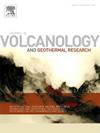阿根廷巴塔哥尼亚多穆约火山复合地热系统中控制微量元素起源、运移和输运的水文地球化学过程
IF 2.3
3区 地球科学
Q2 GEOSCIENCES, MULTIDISCIPLINARY
Journal of Volcanology and Geothermal Research
Pub Date : 2025-03-27
DOI:10.1016/j.jvolgeores.2025.108322
引用次数: 0
摘要
多穆约火山杂岩系统是巴塔哥尼亚(阿根廷)最有潜力的地热田之一。在本文中,我们在前人研究的基础上,结合微量元素的系统表征,提出了多穆约地热系统的地球化学模型,从而为阿根廷最令人印象深刻的地热系统之一增添了新的谜团。在2013年至2016年的3次野外活动中,从17个不同的采样点采集了38个水样,分析了28种微量元素(Li、Be、B、Al、Ti、V、Cr、Mn、Fe、Co、Ni、Cu、Zn、As、Se、Rb、Sr、Y、Zr、Mo、Cd、Sb、Cs、Ba、Tl、Pb、Th和U),采样点包括主要河流(Varvarco)及其穿过地热区的支流,以及热泉和冷泉。重点研究了微量元素质量通量的来源、行为和估算。计算河流输送的微量元素的质量通量是估计潜在有毒元素影响和经济价值元素开发的重要工具。其中,河流输运的多泥约地热系统中As、B、Cs、Li、Sr、Rb等微量元素的质量通量为45 ~ 278 t y−1;这些元素流入瓦尔瓦尔科河,在那里,这些元素的浓度和质量通量在地热区的下游比上游增加了一到两个数量级。本文章由计算机程序翻译,如有差异,请以英文原文为准。
Hydrogeochemical processes governing the origin, mobility and transport of trace elements in the Domuyo Volcanic complex Geothermal system (Patagonia, Argentina)
The system of Domuyo Volcanic Complex is one of the most promising geothermal fields of Patagonia (Argentina). In this paper, we present a geochemical model of the Domuyo geothermal system based on previous studies and integrated with the systematic characterization of trace elements, thus adding a new piece to the puzzle of one of the most impressive geothermal systems in Argentina.. A total of 38 water samples were collected from 17 different sampling sites, during three field-campaigns from 2013 to 2016, and analysed for 28 trace elements (Li, Be, B, Al, Ti, V, Cr, Mn, Fe, Co, Ni, Cu, Zn, As, Se, Rb, Sr, Y, Zr, Mo, Cd, Sb, Cs, Ba, Tl, Pb, Th and U). Sampling sites included the main river (Varvarco), its tributaries which cross the geothermal area, and thermal and cold springs. The investigation was focused on the origin, behaviour and estimation of mass fluxes of trace elements. Computing mass fluxes of trace elements transported by rivers is an important tool in the estimation of both the impact of potentially toxic elements and the exploitation of economically valuable elements. Among others, the mass fluxes of trace elements originating from the Domuyo geothermal system transported by rivers range from 45 to 278 t y−1 for As, B, Cs, Li, Sr and Rb; such contributions flow to the Varvarco river, where the concentrations and mass fluxes of these elements increase by one to two orders of magnitude in the site downstream of the geothermal area with respect to that upstream.
求助全文
通过发布文献求助,成功后即可免费获取论文全文。
去求助
来源期刊
CiteScore
5.90
自引率
13.80%
发文量
183
审稿时长
19.7 weeks
期刊介绍:
An international research journal with focus on volcanic and geothermal processes and their impact on the environment and society.
Submission of papers covering the following aspects of volcanology and geothermal research are encouraged:
(1) Geological aspects of volcanic systems: volcano stratigraphy, structure and tectonic influence; eruptive history; evolution of volcanic landforms; eruption style and progress; dispersal patterns of lava and ash; analysis of real-time eruption observations.
(2) Geochemical and petrological aspects of volcanic rocks: magma genesis and evolution; crystallization; volatile compositions, solubility, and degassing; volcanic petrography and textural analysis.
(3) Hydrology, geochemistry and measurement of volcanic and hydrothermal fluids: volcanic gas emissions; fumaroles and springs; crater lakes; hydrothermal mineralization.
(4) Geophysical aspects of volcanic systems: physical properties of volcanic rocks and magmas; heat flow studies; volcano seismology, geodesy and remote sensing.
(5) Computational modeling and experimental simulation of magmatic and hydrothermal processes: eruption dynamics; magma transport and storage; plume dynamics and ash dispersal; lava flow dynamics; hydrothermal fluid flow; thermodynamics of aqueous fluids and melts.
(6) Volcano hazard and risk research: hazard zonation methodology, development of forecasting tools; assessment techniques for vulnerability and impact.

 求助内容:
求助内容: 应助结果提醒方式:
应助结果提醒方式:


